|
|
|
HOME
|
US Navy -
ships
|
US Navy - air
units
|
USMC - air
units
|
International
Navies
|
Weapon Systems
|
Special Reports |
|
|
|
|
|
United Kingdom - Royal Navy Amazon (Type 21) class Guided Missile Frigate |
|
|
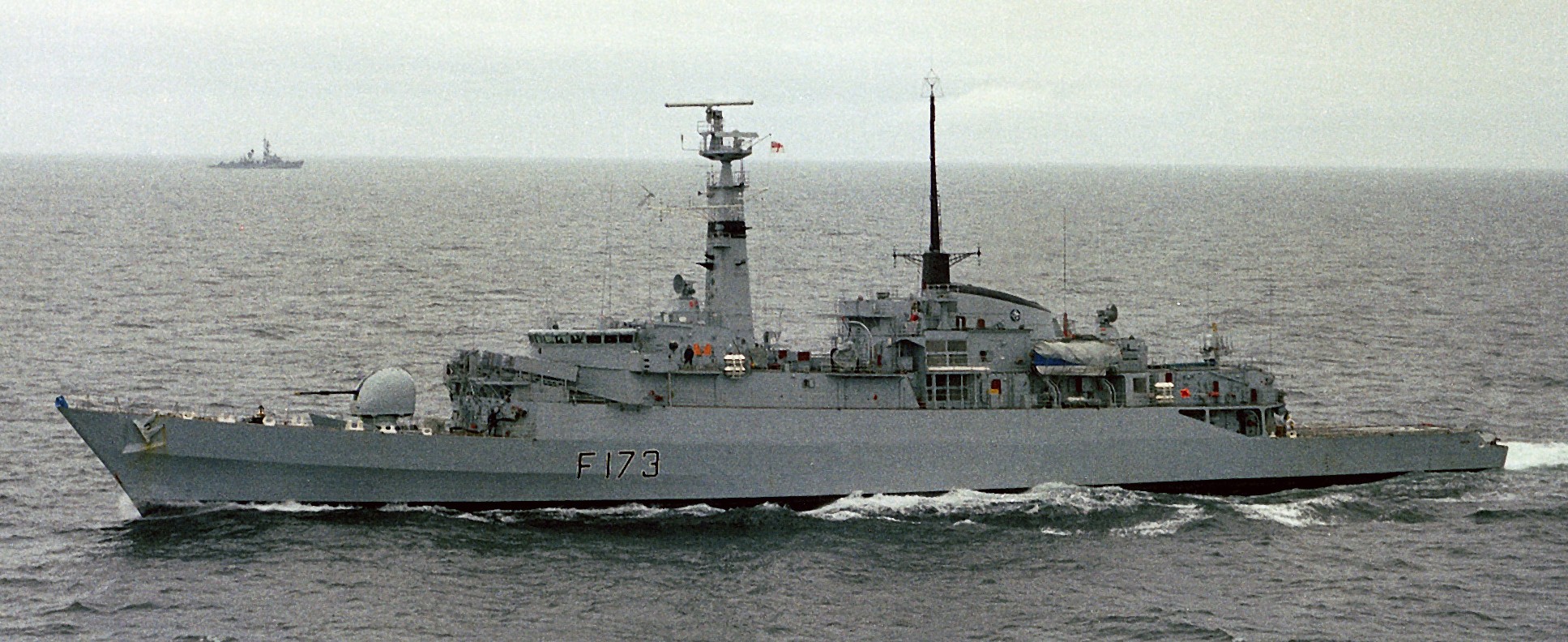 |
|
|
| Ships: |
|
F 169
HMS Amazon
(1974) F 170 HMS Antelope (1975) F 171 HMS Active (1977) F 172 HMS Ambuscade (1975) F 173 HMS Arrow (1976) F 174 HMS Alacrity (1977) F 184 HMS Ardent (1977) F 185 HMS Avenger (1978) |
| Specifications: |
|
Length:
117 meters (384 ft)
Beam: 12,7 meters (41 ft 8 in) Draft: 5,8 meters (19 ft) Displacement: 3250 tons (full load) Speed: 32+ knots (59+ km/h) Range: 4000 NM (7400 km) at 17 knots (31 km/h) / 1200 NM (2200 km) at 30 knots (56 km/h) Complement: 177 Propulsion: 2 x Rolls-Royce Tyne gas turbines (8500 shp) - cruise 2 x Rolls-Royce Olympus gas turbines (50000 shp) - boost 2 shafts / 2 propellers Armament: 1 x Mark 8 - 4.5 inch (114 mm) gun 1 x GWS-24 Sea Cat SAM missile system 4 x MM38 Exocet anti-ship missile launcher 2 x 20mm Oerlikon machine guns (later 4) 2 x STWS-1 324mm (12.75 in) triple torpedo tubes for Mk-46 and Stingray ASW torpedoes Aviation: flight deck and hangar for 1 helicopter (Westland Wasp or Lynx) |
|
|
|
Development
The class was
ordered under political and Treasury pressure for a relatively
cheap, yet modern, general purpose escort vessel which would be
attractive to governments and officers of South America and
Australasia -the traditional export markets of British shipyards. It
was also envisaged as an out-of-area RN gunboat that would retain UK
presence in those areas, as well as the Caribbean and the Gulf;
essentially replacing the diesel Types Type 41, Type 61 and COSAG
Type 81 with smaller crewed vessels. The RN staff disliked the idea
and would have preferred, like many USN Admirals, to continue to
develop steam types - in the RN's case, the Leander class, which was
regarded as an especially successful and quiet anti-submarine
hunter, but was seen by the politicians as dated and by the Treasury
and export-oriented shipyards as too expensive to market. The
development of Vosper's own export designs, the Mk 5 for Iran and
the Mk 7 for Libya, increased the pressure on the Admiralty to
accept this line of naval development, which seemed to offer a cheap
export frigate with a range of 6,000 nm, a top speed of 37 knots, a
superficially good armament of the new Mark 8 4.5 inch gun,
facilities for a Westland Wasp helicopter, anti-ship missiles and
two triple lightweight Seacat missile launchers. When plans for the
new Libyan frigate, Dat Assawari, were finalised in 1968, the
Admiralty board accepted its paper specifications were unanswerable
and they would have to allow the shipyards to develop a low cost
fill in a/s and general purpose version for the RN that would be
stretched and fully gas turbine powered rather than CODAG like the
Mk 5 and Mk 7. In reality, it was a much more difficult design, with
the RN requiring the extra internal weight of the Computer Assisted
Action Information System (CAAIS) computer command systems and the
lack of heavy diesels or a steam plant low in the hull to balance
the heavy top weight of CAAIS. The fitting of Tyne gas turbines for
cruising, instead of the diesels used in the Iranian and Libyan
versions, meant fuel consumption and cost would be high, which was a
tremendous problem for the Royal Navy in the early 1980s when the
austerity of early Thatcherism, cut the Royal Navy fuel allowance
and meant most frigates spent more time tied up, rather than at sea
in 1980-1, and despite the smaller crew, running costs of the Type
21 were ten percent higher than the Leanders. The Type 21 would
provide the shipyards with experience in building fully gas turbine
powered ships and provide them with useful work for the shipyards
while the Type 42 destroyer and Type 22 frigate would not be ready
until the mid-to-late 1970s. As the Admiralty design board were busy
with the latter, the Type 21 project was given to private shipyards
Vosper Thornycroft and Yarrow. The unmistakably yacht-like and
rakish lines were indicative of their commercial design. Their
handsome looks combined with their impressive handling and
acceleration lent itself to the class nickname of Porsches.
At one stage, it
was hoped to build a joint design that would meet both the Royal
Navy's requirement for a low-cost Patrol Frigate and Australia's
General Purpose Escort requirement, with discussions between the two
navies beginning in 1967, with Australia, who hoped to build a
series of the five Type 21s in Australian shipyards, part funding
design work on the proposal. The requirements of the two navies were
significantly different, with Australia wanting higher speeds (35
knots (65 km/h; 40 mph) rather than the 32 knots (59 km/h; 37 mph)
requirement of the Royal Navy) and American armament (including Sea
Sparrow missiles and a 5 inch Mark 45 gun), and Australia pulled out
of the project in November 1968, later refining its requirements
into the Australian light destroyer project.
A contract for
detailed design of the new frigate to meet Royal Navy requirements
and to build the first example was placed in March 1969. By this
time cost had crept up to £7.3 million, more than Leander-class
frigates.
Attempts
continued to sell frigates derived from the Type 21 to export
customers, including Argentina, while a broad-beam derivative armed
with vertical-launch Sea Wolf surface-to-air missiles was offered to
Pakistan in 1985.
The first of the
eight built, Amazon, entered service in May 1974.
Design
As delivered, the
Type 21s were armed with a single 4.5 inch Mark 8 naval gun forward,
and a four-round launcher for the Sea Cat surface-to-air missile
aft. The Italian Selenia Orion-10X lightweight fire control radar
was adopted to control both the gun and the Sea Cat missile (as the
GWS-24 system) in an effort to save weight. A Type 992Q air/surface
radar was fitted, but a long-range air-search radar was not
provided. A hangar and flight deck were provided for a single
helicopter, at first the Westland Wasp. The CAAIS was provided to
integrate the ship's weapons and sensor systems and provide the crew
with all the relevant information they required to fight the ship,
as and when they needed it.
In terms of
automation, systems integration and habitability, they were well in
advance of many of the ships that they replaced, such as the Type 81
frigate and Rothesay-class frigate - the latter's basic design could
be traced back to 1945.
Modifications
The Westland
Wasp, a single-role torpedo-carrying helicopter, was replaced by the
vastly more capable multi-mission Westland Lynx when it became
available. As and when ships came in for refit, ship-launched
anti-submarine torpedoes were also fitted, in the form of two STWS-1
triple-tube launchers capable of firing United States
USN/NATO-standard Mark 44 or Mark 46 torpedoes. After the Falklands
War, two more 20mm Oerlikon guns were mounted, one each side of the
hangar, to provide extra close-in armament on some ships of the
class.
Analysis
The class was
also criticised for being overcrowded - at 384 ft (117 m), they had
177 crewmen compared to 436 ft (133 m) and just 185 crewmen for the
modern Type 23 frigate. This was important at a time when the Royal
Navy was facing a manpower shortage. The standard of accommodation
for the officers was better than the RN average and the senior
ratings enjoyed separate cabins - unlike the petty officers of the
Type 42 destroyer of the same era, who slept in bunk rooms. The
ratings' accommodation was also improved, with four-man sleeping
berths leading off from the communal mess deck; again, far better
than those of the Type 42 destroyer. In essence, the standard of
accommodation and fitting were better, especially for officers,
because it was a design intended to attract export orders. It is
very little more than a stretched version of the MK 7 Vospers
frigate built for third world Libya and, other than the fitting of
CAAIS, with its electronic and intended weapon fit essentially the
same as the Mk 7 prototype in type or level of sophistication.
Higher automation and the new Mk 8 4.5 inch automatic gun combined
with, in many ways, a much simpler electronic fit than the Leanders
or Type 42, the new Type 21 class lacked both the long range radar,
the Type 965, carried by most UK warships or the Limbo mortar and it
associated sonar. Inevitably, that meant a much smaller crew than
the Leanders, with little capability to modernise (owing to its
small size) and already being close to its topweight limit; the Type
21's days were numbered. A decision not to modernize them was made
in 1979 even before the Falklands losses. The several hundred tons
of ballast that had to carried low down meant that the frigates
could not usually achieve their planned 35 knots speed for any long
distance, but the ships were all still good for a dramatic 37 knot
burst speed, with two ships claiming to have exceeded 40 knots on
more than one occasion. Nevertheless, these ships were regarded
favorably by their crews and proved to be highly maneuverable and
reliable assets in a navy suffering depletion in the number of
modern escort hulls.
Service
Sale to
Pakistan
source: wikipedia |
|
|
| Ships: |
|
F 169 HMS Amazon Builder: Vosper Thornycroft, Woolston, Hampshire Ordered: March 26, 1969 Laid down: November 6, 1969 Launched: April 26, 1971 Commissioned: May 11, 1974 Decommissioned: September 30, 1993 Fate: sold to Pakistan / renamed PNS Babur (D 182) F 170 HMS Antelope Builder: Vosper Thornycroft Ordered: May 11, 1970 Laid down: March 23, 1971 Launched: March 16, 1972 Commissioned: July 16, 1975 Decommissioned: - Fate: sunk in the Falklands War by Argentine bombs on May 24, 1982 F 171 HMS Active Builder: Vosper Thornycroft Ordered: May 11, 1970 Laid down: July 21, 1971 Launched: November 23, 1972 Commissioned: June 17, 1977 Decommissioned: September 23, 1994 Fate: sold to Pakistan / renamed PNS Shah Jahan (D 186) F 172 HMS Ambuscade Builder: Yarrow Shipbuilders, Scotstoun Ordered: Laid down: September 1, 1971 Launched: January 18, 1973 Commissioned: September 5, 1975 Decommissioned: July 28, 1993 Fate: sold to Pakistan / renamed PNS Tariq (D 181) F 173 HMS Arrow Builder: Yarrow Shipbuilders, Scotstoun Ordered: November 11, 1971 Laid down: September 28, 1972 Launched: February 5, 1974 Commissioned: July 29, 1976 Decommissioned: March 1, 1994 Fate: sold to Pakistan / renamed PNS Khaibar (D 183) F 174 HMS Alacrity Builder: Yarrow Shipbuilders, Scotstoun Ordered: November 11, 1971 Laid down: March 5, 1973 Launched: September 18, 1974 Commissioned: July 2, 1977 Decommissioned: March 1, 1994 Fate: sold to Pakistan / renamed PNS Badr (D 184) F 184 HMS Ardent Builder: Yarrow Shipbuilders, Scotstoun Ordered: November 11, 1971 Laid down: February 26, 1974 Launched: May 9, 1975 Commissioned: October 14, 1977 Decommissioned: - Fate: sunk in the Falklands War by Argentine aircraft on May 22, 1982 F 185 HMS Avenger Builder: Yarrow Shipbuilders, Scotstoun Ordered: November 11, 1971 Laid down: October 30, 1974 Launched: November 20, 1975 Commissioned: April 15, 1978 Decommissioned: 1984 Fate: sold to Pakistan / renamed PNS Tippu Sultan (D 185) |
|
images |
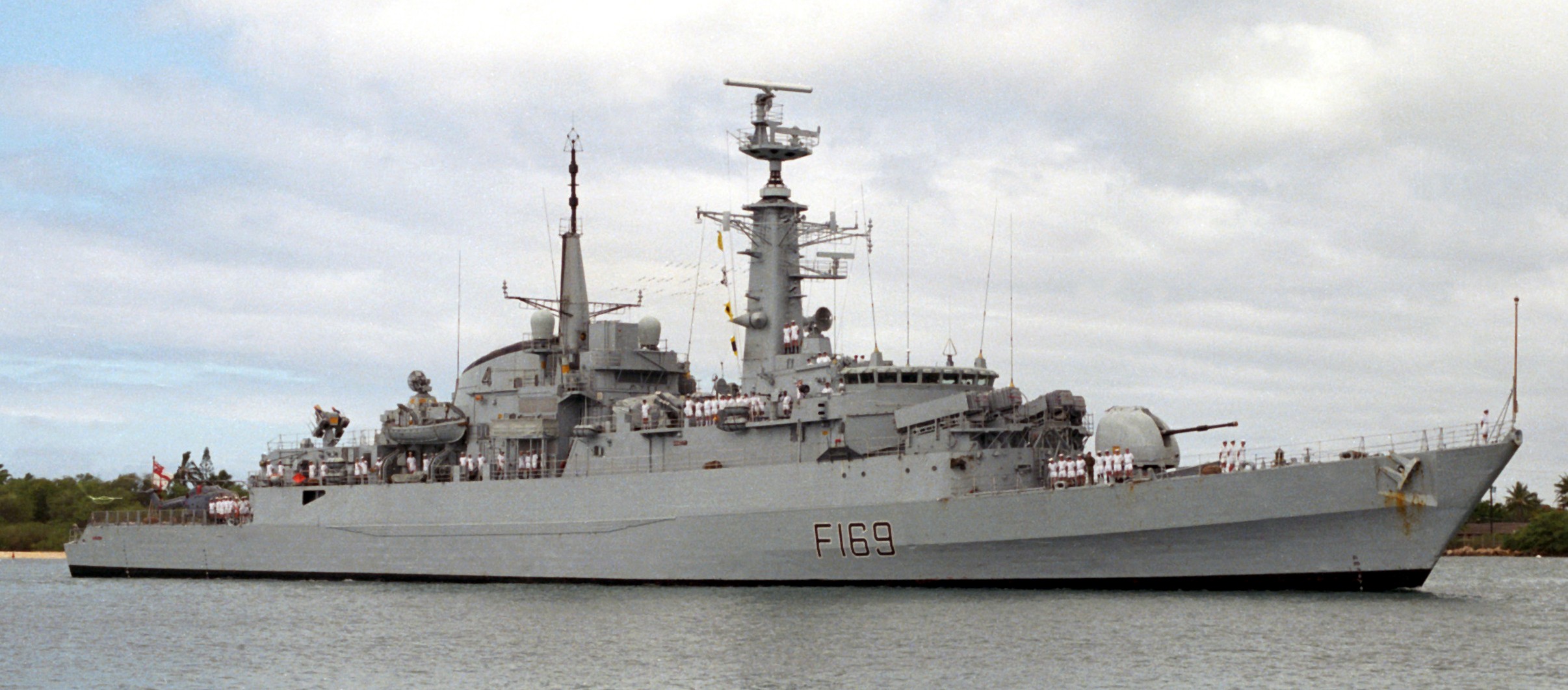 HMS Amazon (F 169) 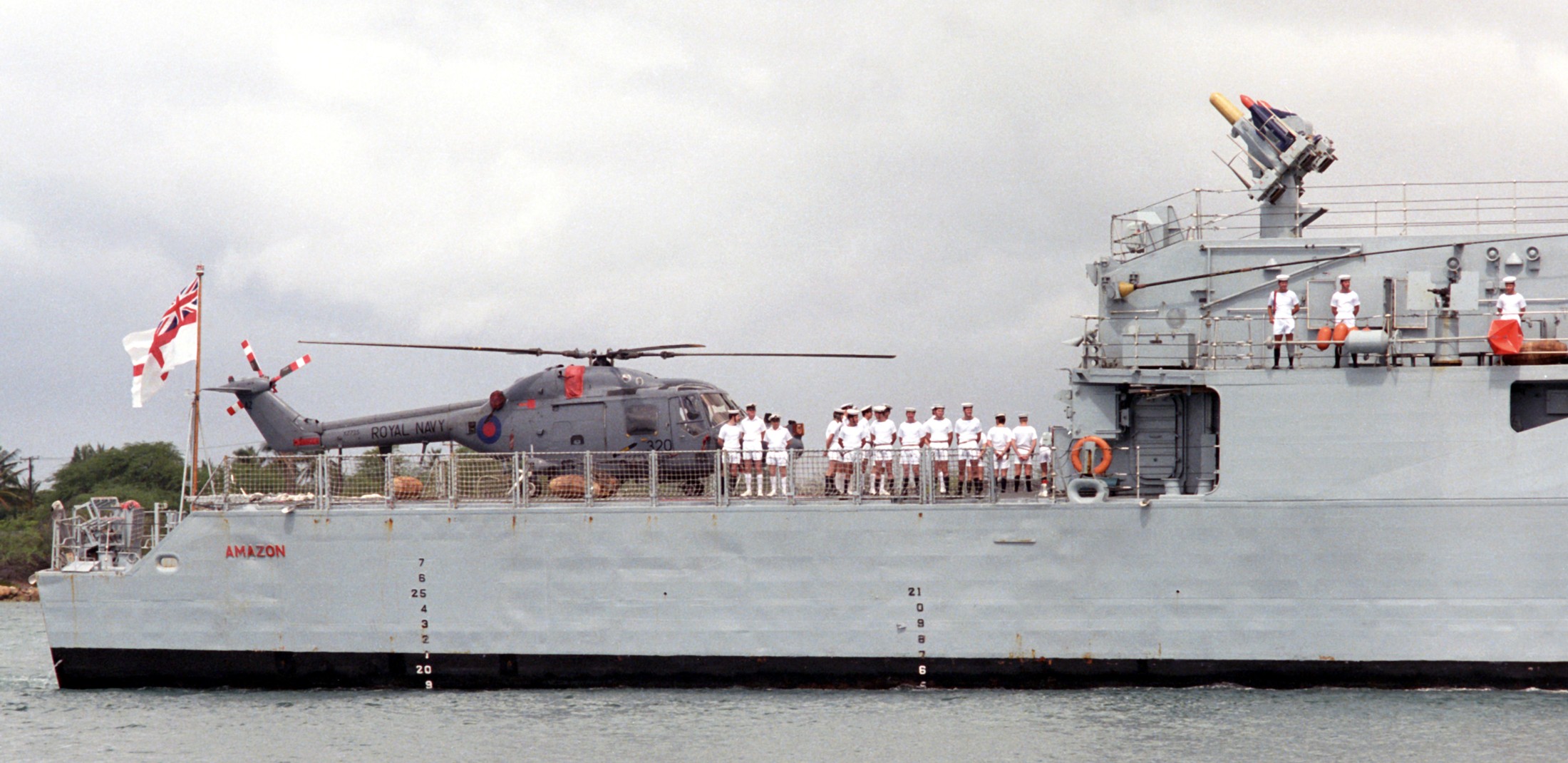 HMS Amazon (F 169) flight deck with Westland Lynx helicopter 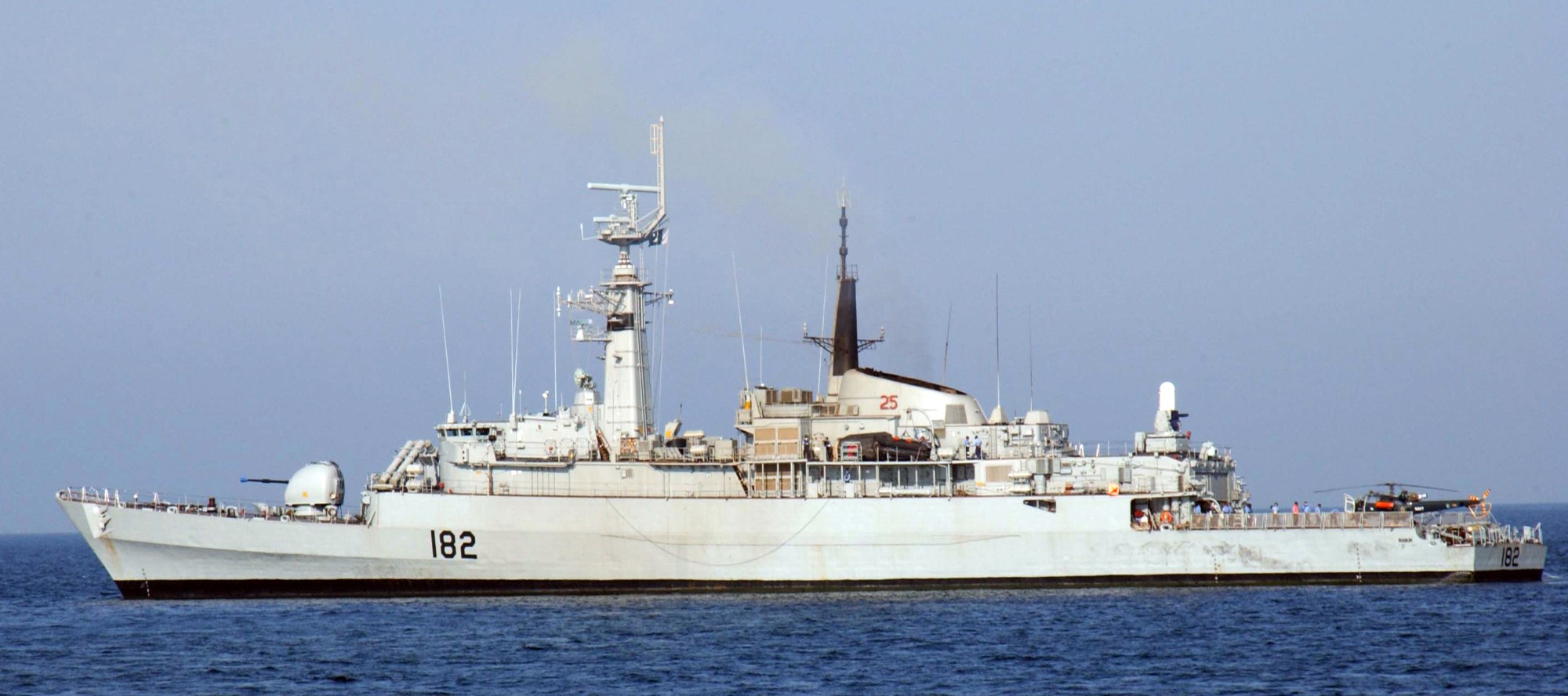 PNS Babur (D 182) - ex HMS Amazon (F 169) with octuple Mk-141 Harpoon launcher instead of the Exocet SSM's and Mk-15 CIWS instead of the Sea Cat SAM 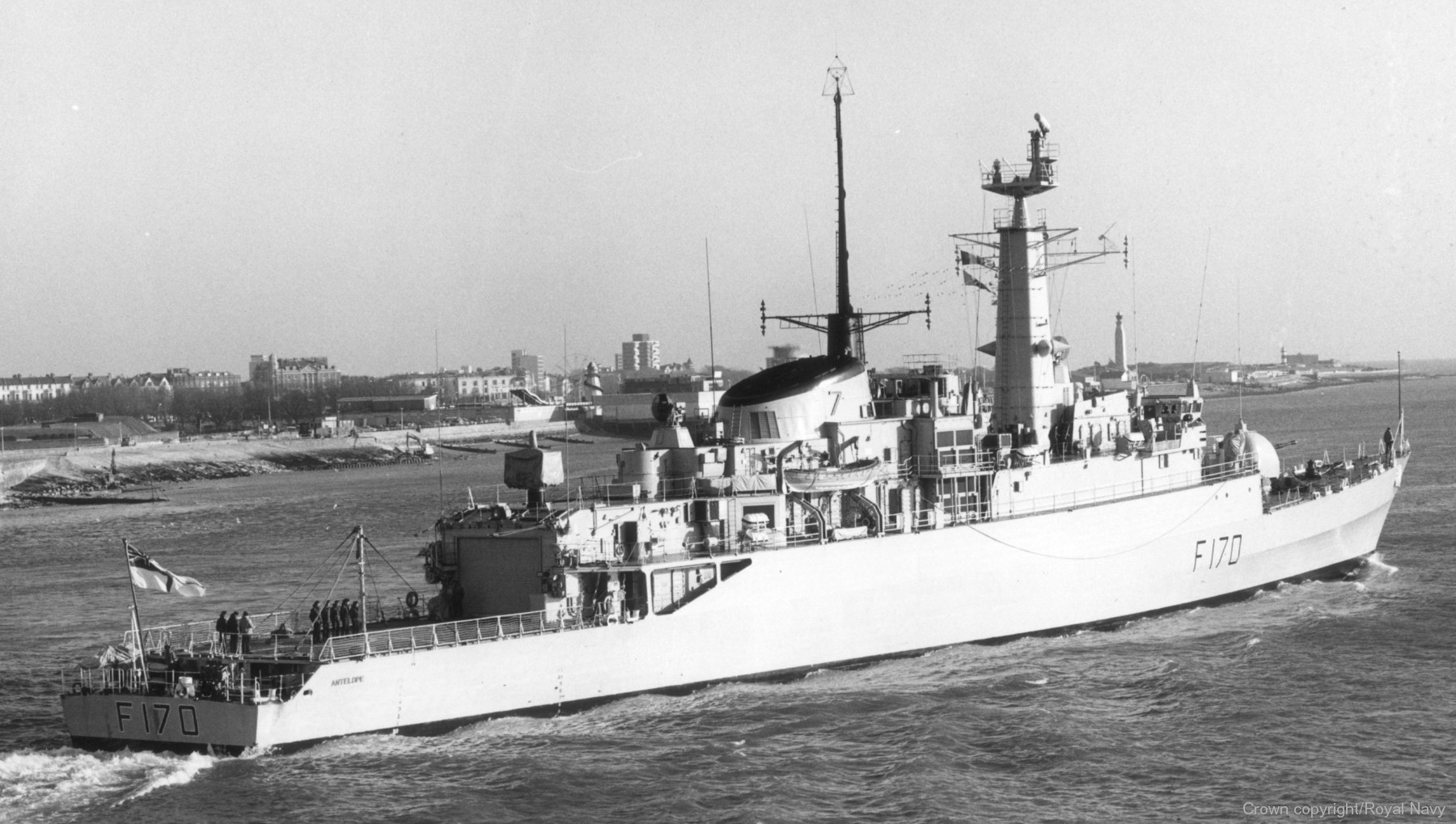 HMS Antelope (F 170) 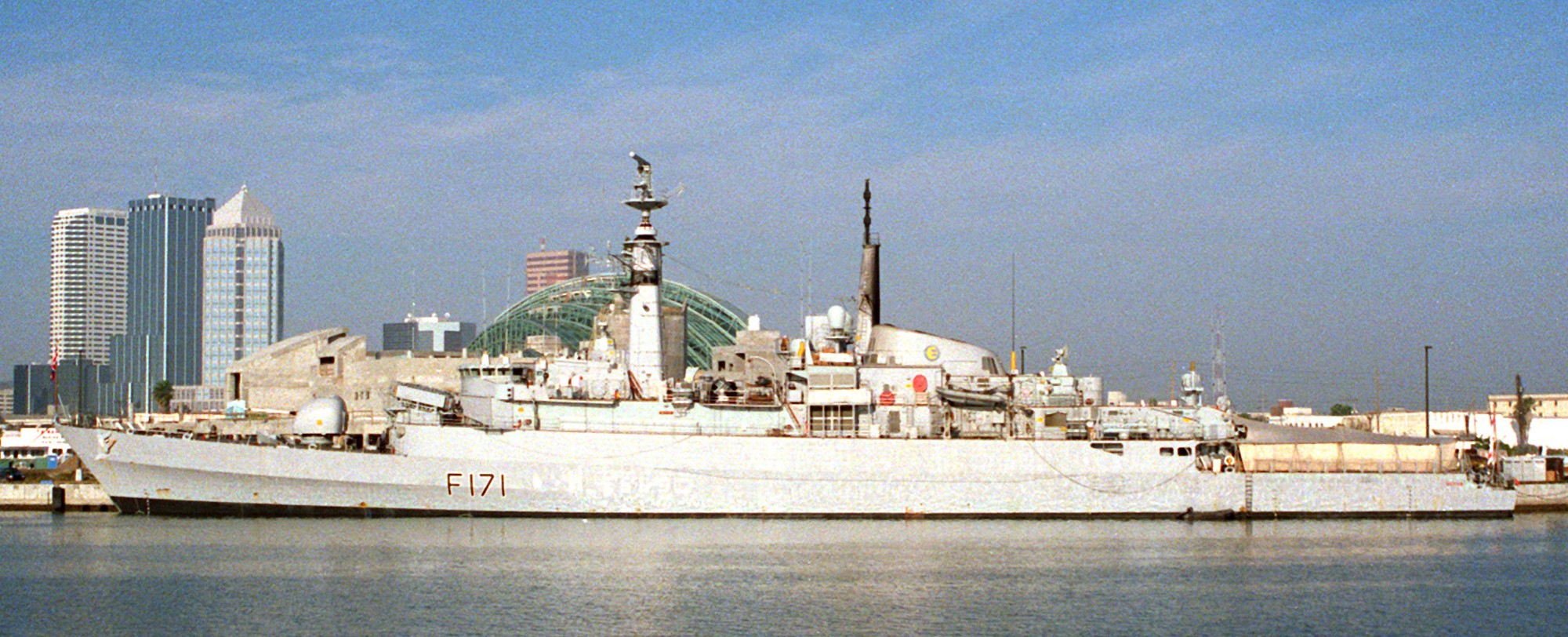 HMS Active (F 171) 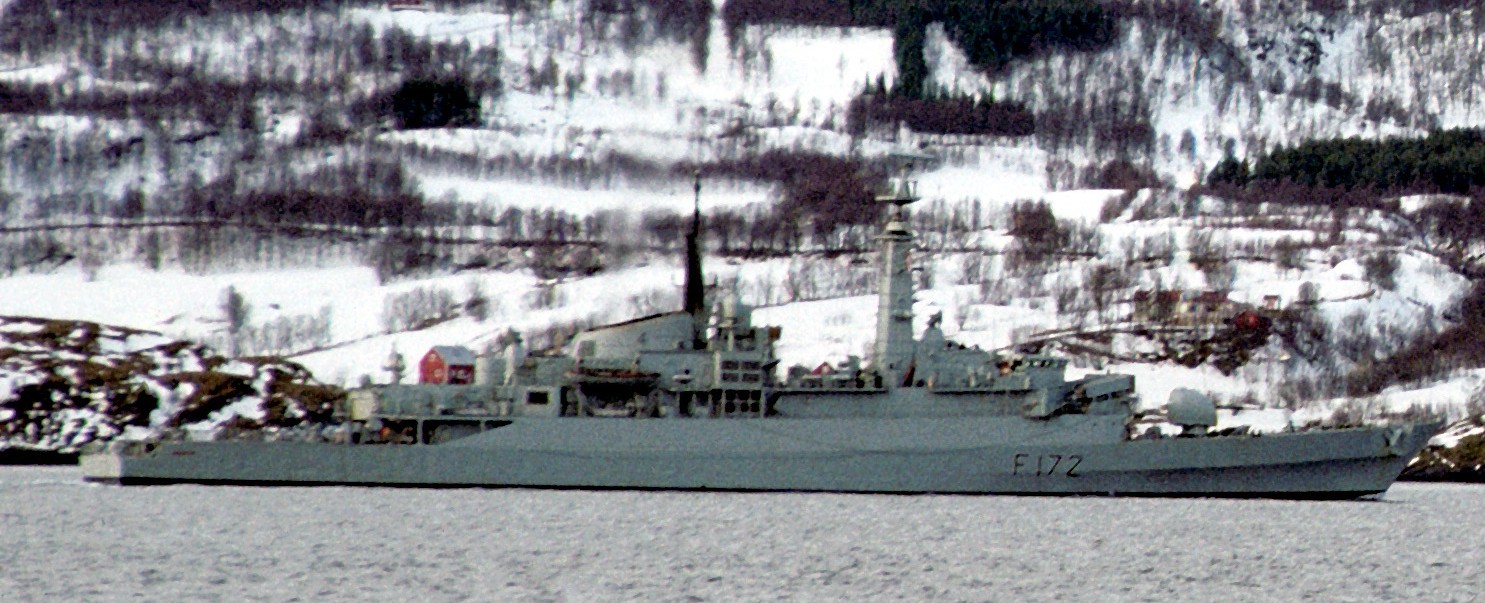 HMS Ambuscade (F 172)  HMS Arrow (F 173) 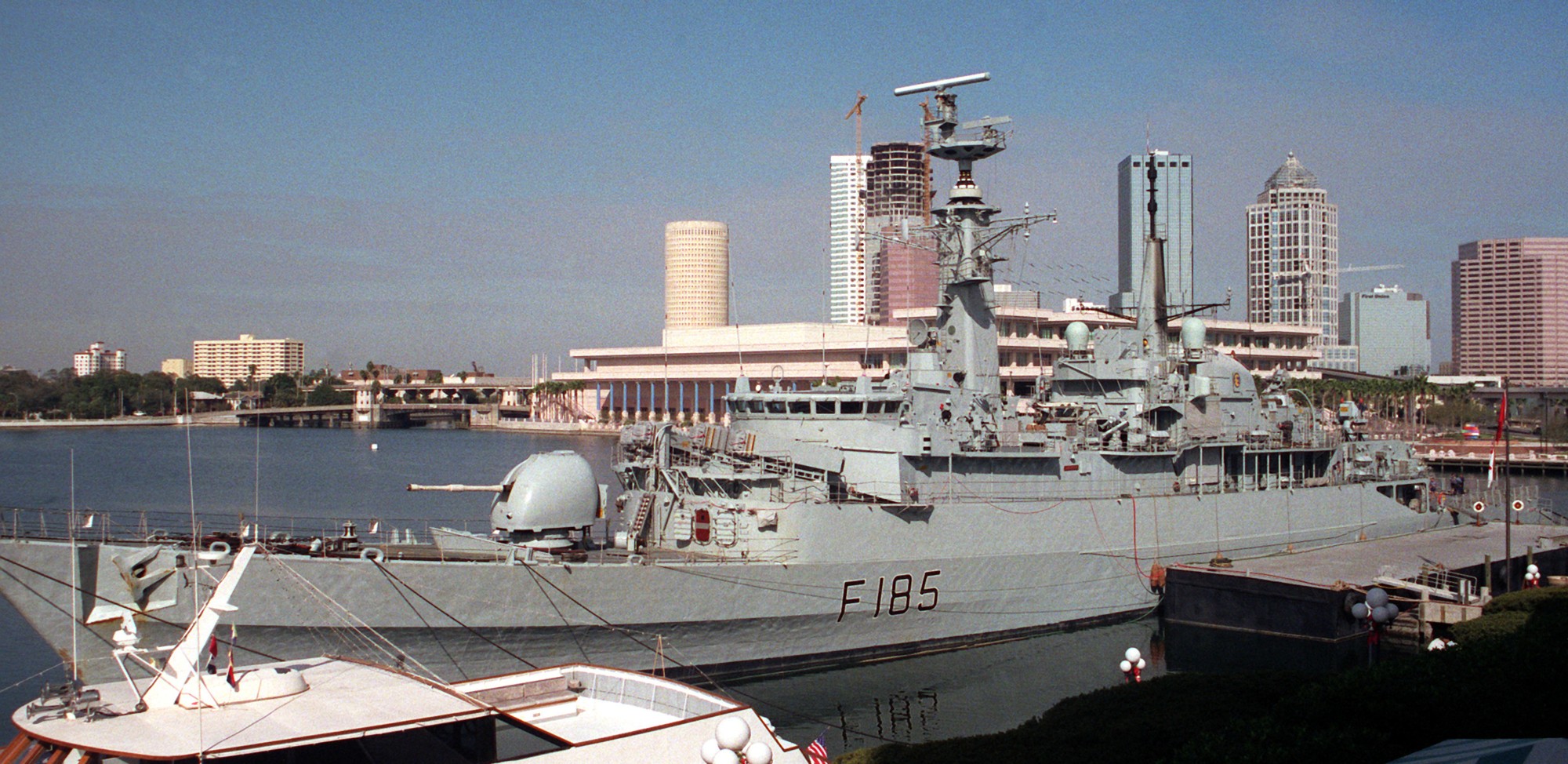 HMS Avenger (F 185) 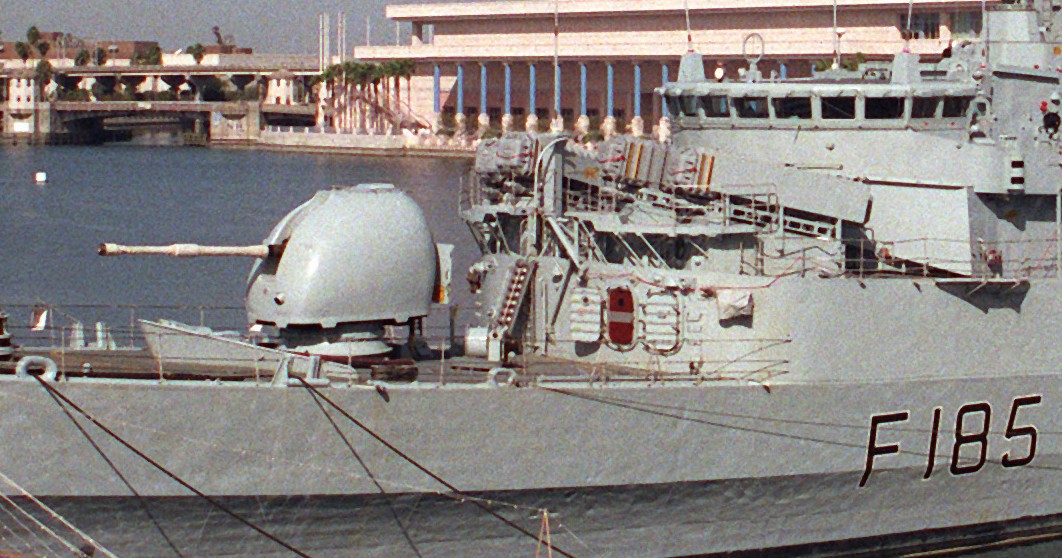 Mark 8 Mod.0 gun and MM38 Exocet SSM launchers 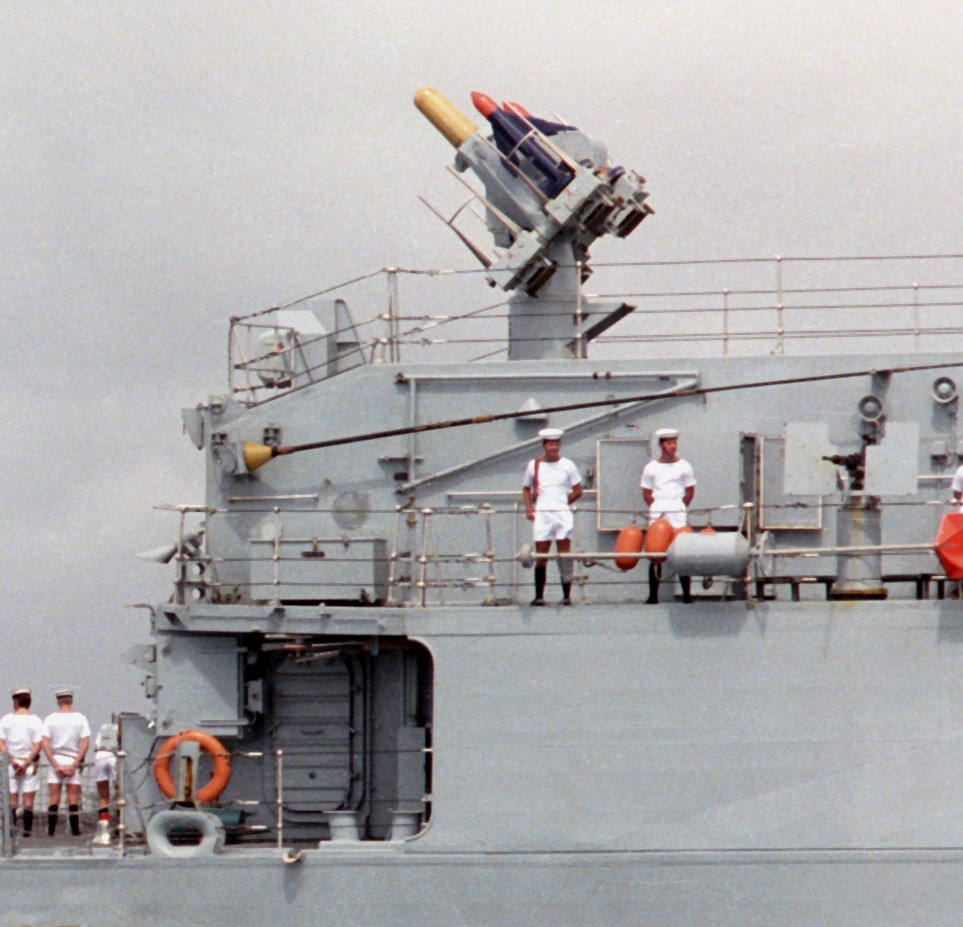 GWS-24 Sea Cat 4-rail SAM launcher 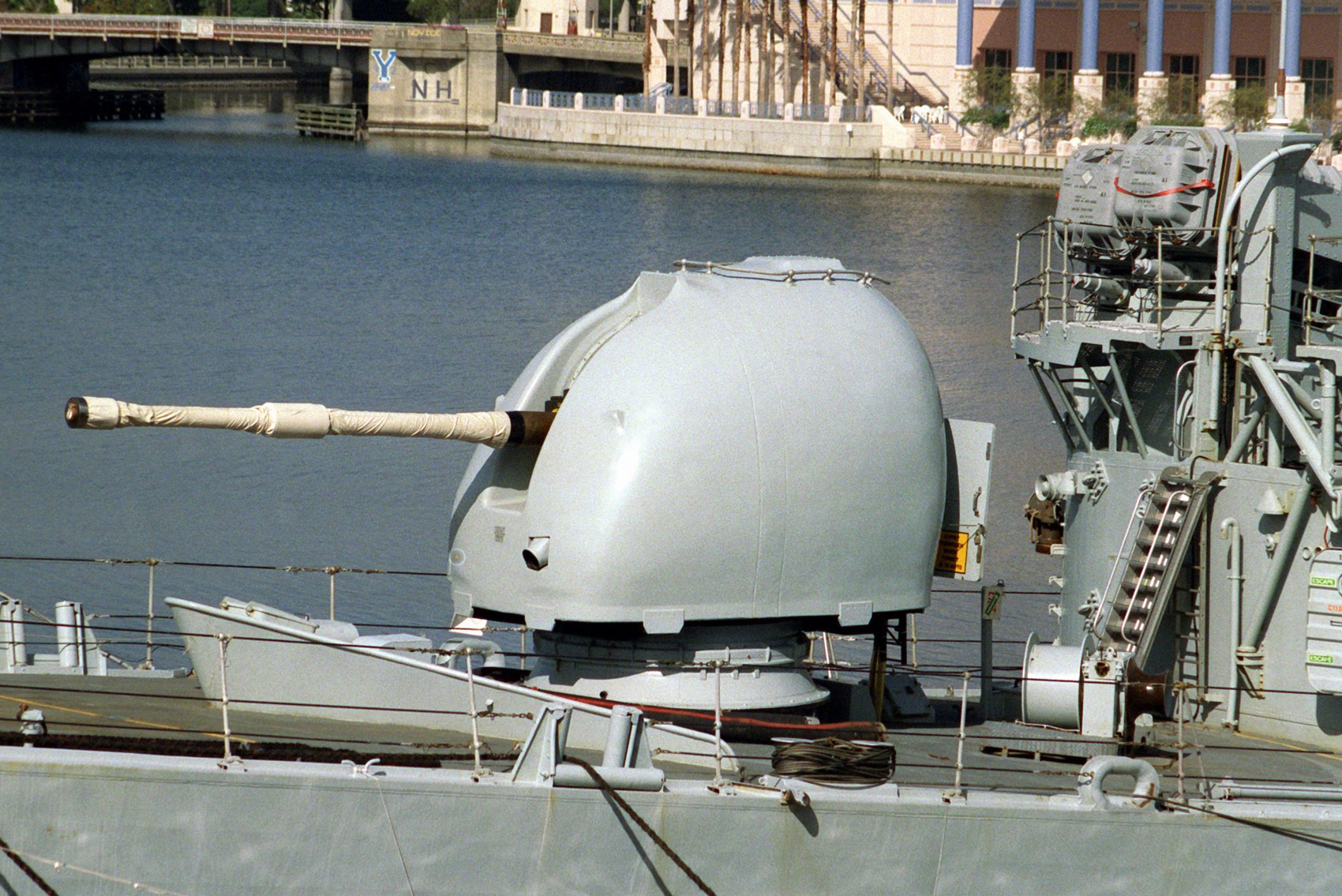 Mark 8 Mod.0 gun 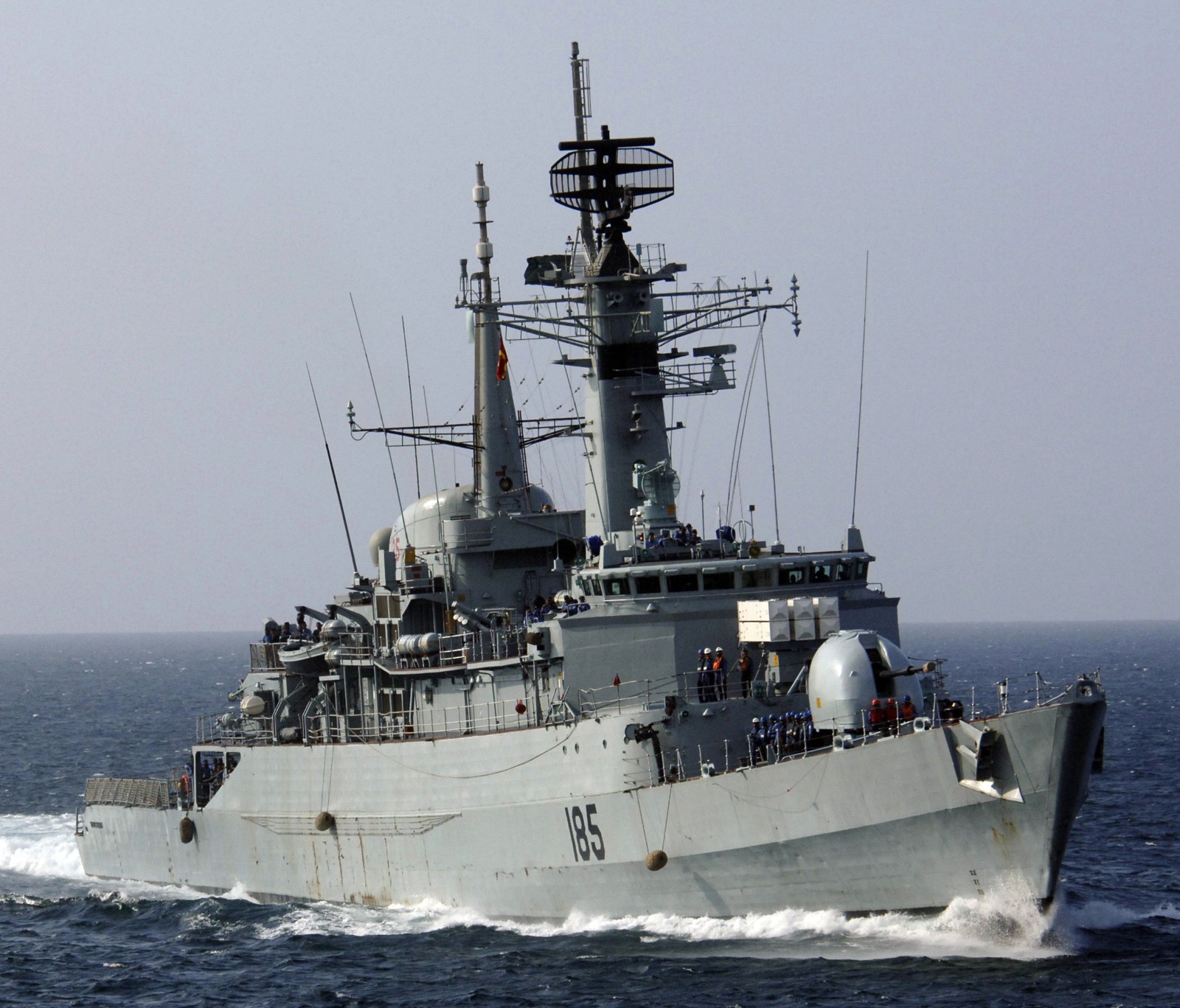 PNS Tippu Sultan (D 185) - ex HMS Avenger (F 185) with Chinese 6-cell LY-60N Hunting Eagle SAM system instead of the Exocet SSM's 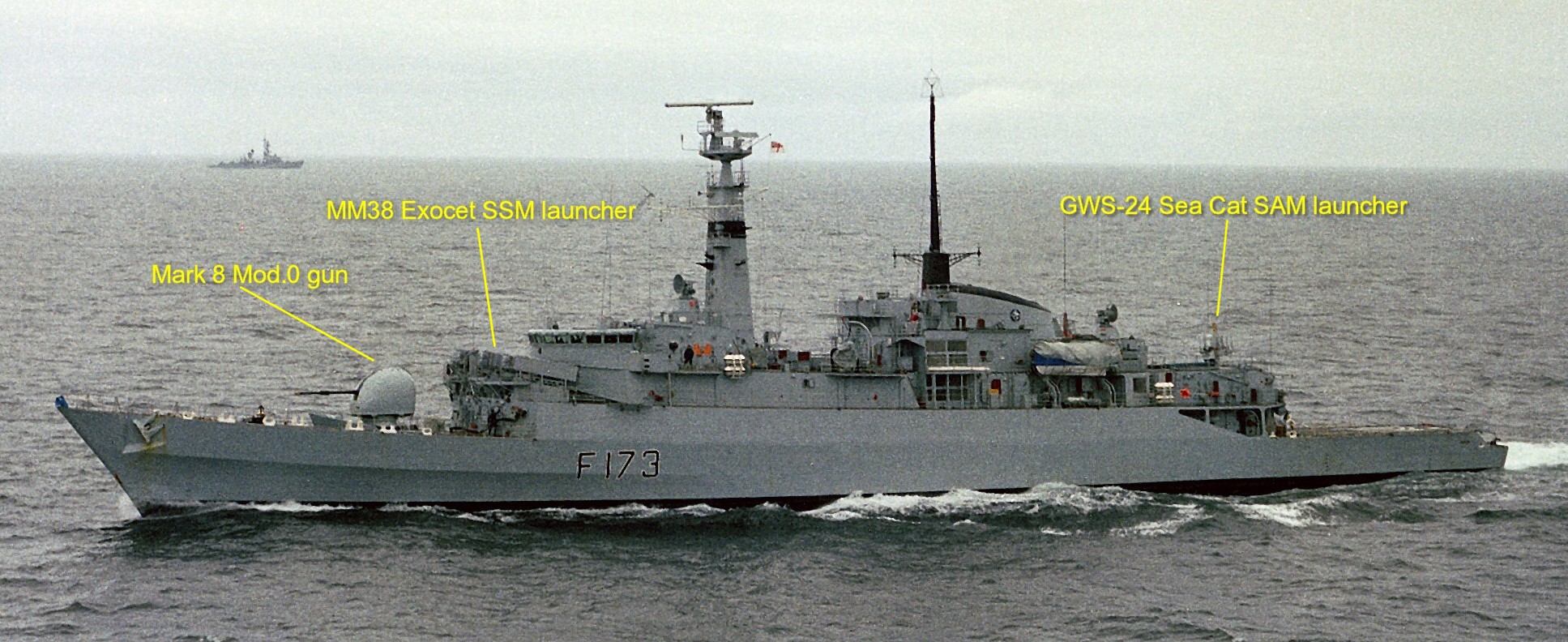 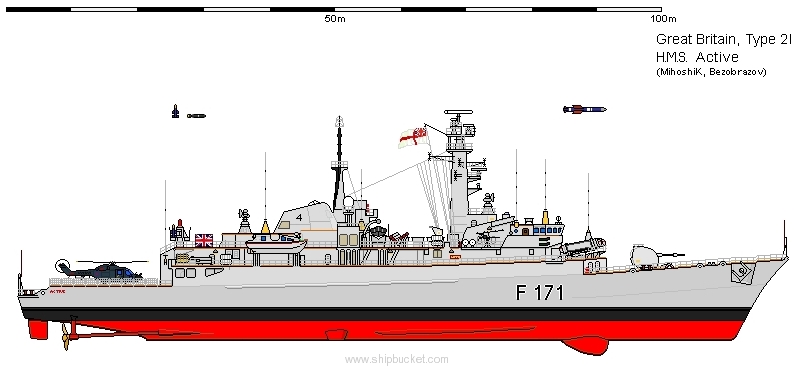 |
|
|
|
|
seaforces.org
|
Royal
Navy start page
| |
